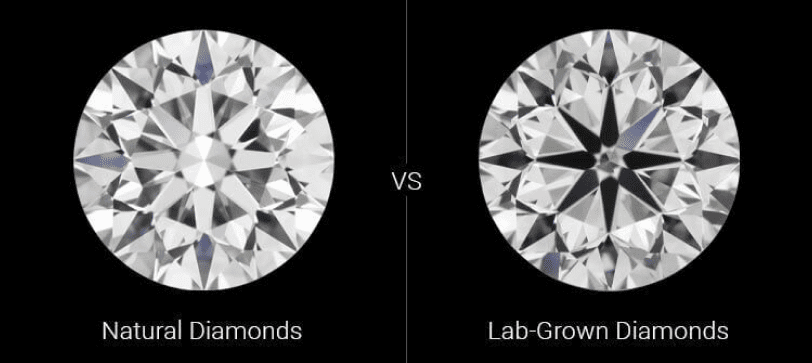



BLOGS
We cover a variety of topics in the jewellery industry.
BLOGS
We cover a variety of topics in the jewellery industry.
Understanding the World of Diamonds:
Natural vs Lab-Grown
In the dynamic landscape of the jewelry industry, one topic sparks robust discussions among gemologists, jewelers, and customers alike: the advent of lab-grown diamonds. These man-made marvels boast impressive similarities to their natural counterparts, prompting a closer look at their origins and characteristics.

Lab-Grown Diamonds: A Quick Overview
Often misunderstood, lab-grown diamonds are, in fact, genuine diamonds with physical and chemical properties mirroring natural ones. Created in highly controlled laboratory environments, these diamonds are subjected to conditions mimicking the extreme heat and pressure of the earth’s mantle.
Two popular methods for lab-grown diamond production include High-Pressure High Temperature (HPHT) and Chemical Vapor Deposition (CVD). Both processes yield diamonds with the same crystal structure, hardness, and brilliant scintillation as natural diamonds.
The Journey of Natural Diamonds
Contrary to popular belief, quality natural diamonds aren’t as ubiquitous as one might think. Born millions of years ago in the earth’s mantle under intense geothermal conditions, natural diamonds journey to the surface through volcanic eruptions. These diamonds, once mined, refined, and polished, grace jewelry stores worldwide, offering timeless elegance.
Distinguishing Natural from Lab-Created Diamonds
Although seemingly identical, natural and lab-grown diamonds harbor subtle differences discernible only by trained gemologists using specialized equipment. From a consumer perspective, both types of diamonds share the same clarity, color, and hardness, making them visually indistinguishable to the unaided eye.
One telltale sign of lab-grown diamonds is the absence of trace amounts of nitrogen, a common element in natural diamonds. Additionally, unique fluorescence and laser inscriptions (post-manufacturing) can further confirm a diamond’s lab-grown origin.
Pricing: Lab-Grown vs Natural Diamonds
Lab-grown diamonds offer a cost-effective alternative to natural diamonds, typically priced 30-50% lower. Despite sharing similar characteristics – size, shape, cut, clarity, and quality – the rarity and unique formation process of natural diamonds command higher prices.
Sustainability in Diamond Manufacturing
Diamond mining poses significant environmental challenges, from extensive earth excavation to limited availability of gem-quality stones. Conversely, lab-grown diamonds provide a more sustainable alternative, with production methods like HPHT and CVD offering an environmentally conscious choice. Though time-consuming and initially costly, these methods prove more sustainable and affordable in the long run.
Evaluating Diamond Value
While high-quality natural diamonds have maintained consistent value over time, lab-grown diamonds are still proving their market longevity. Technological advancements have made lab-grown diamond production increasingly efficient, driving down costs and appealing to environmentally conscious millennials.
Despite this, tools like ASET Scopes have improved the identification and grading of natural diamonds, maintaining their consistent value over decades. In contrast, diamond simulants like Cubic Zirconia (CZ) and Moissanite, while often marketed as diamond substitutes, can’t match the durability and quality of lab-grown diamonds.
Why Choose Lab-Grown Diamonds?
Opting for lab-grown diamonds means embracing sustainability without compromising on beauty. With virtually indistinguishable aesthetics from natural diamonds, a vast range of designs, colors, and sizes, and a significantly lower price point, lab-grown diamonds offer a promising, eco-friendly future for the jewelry industry.
